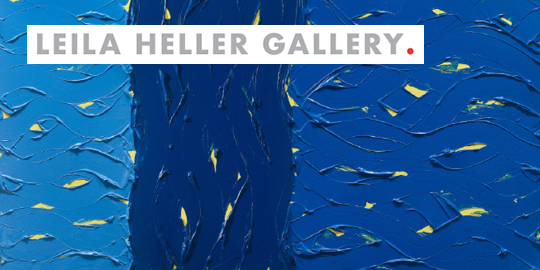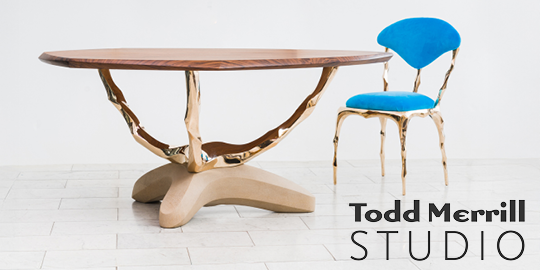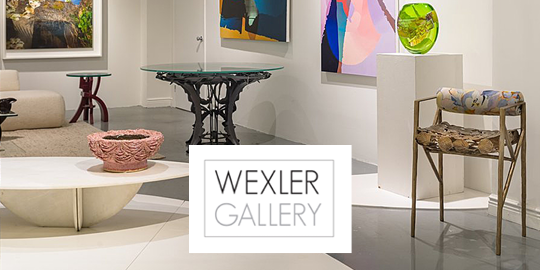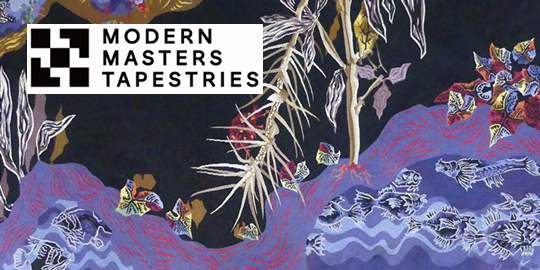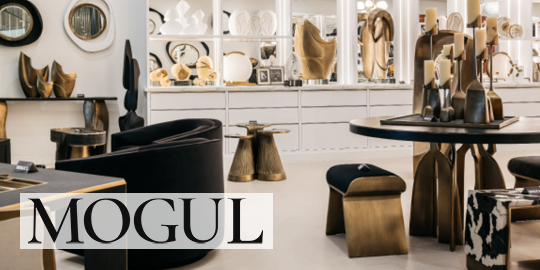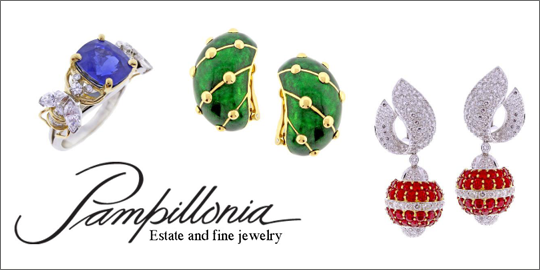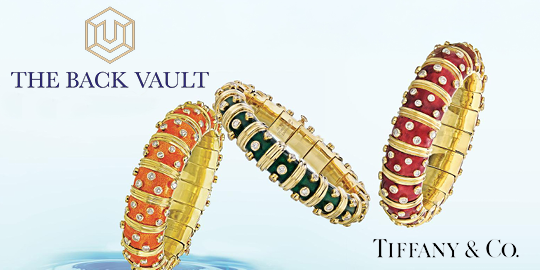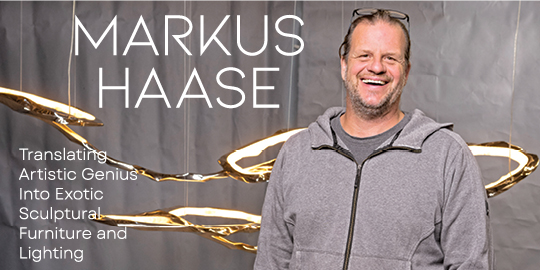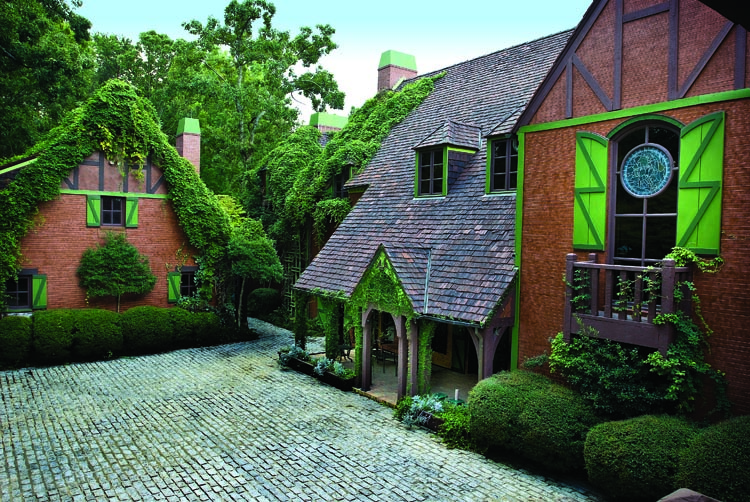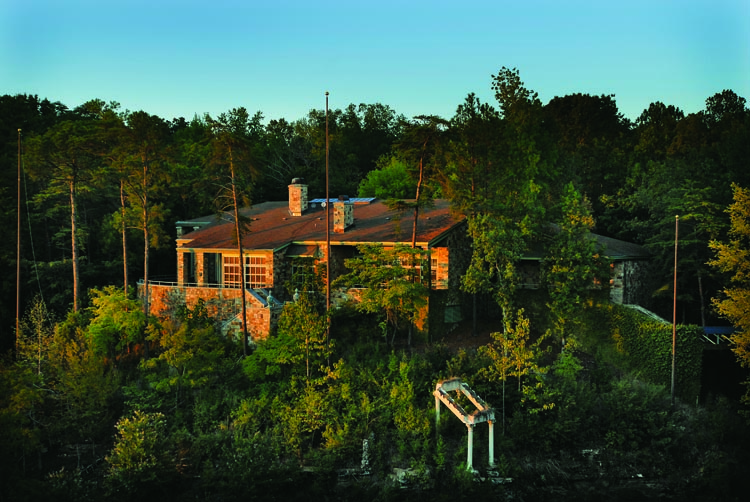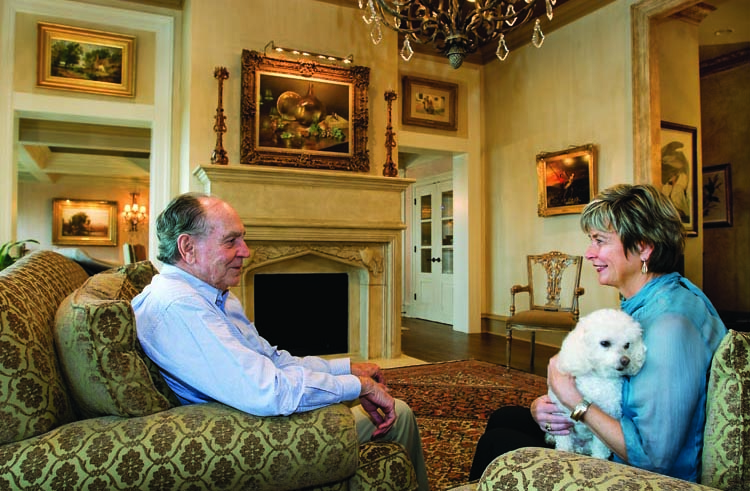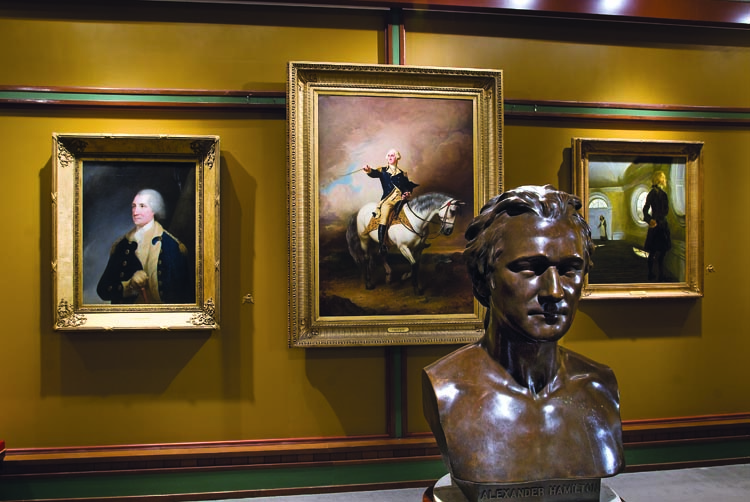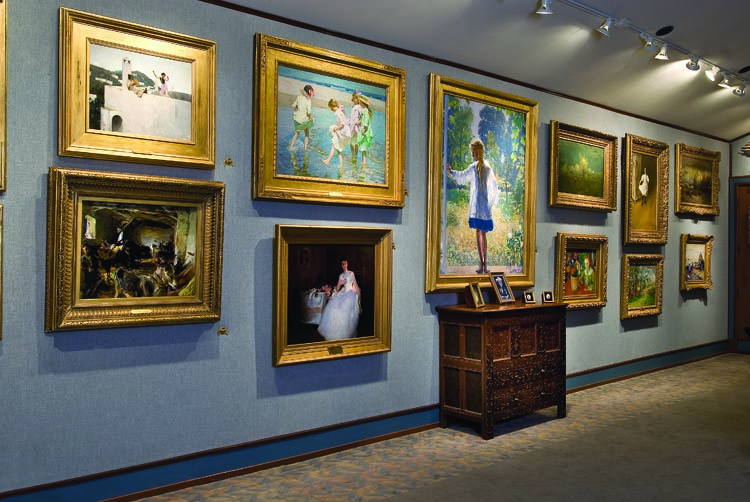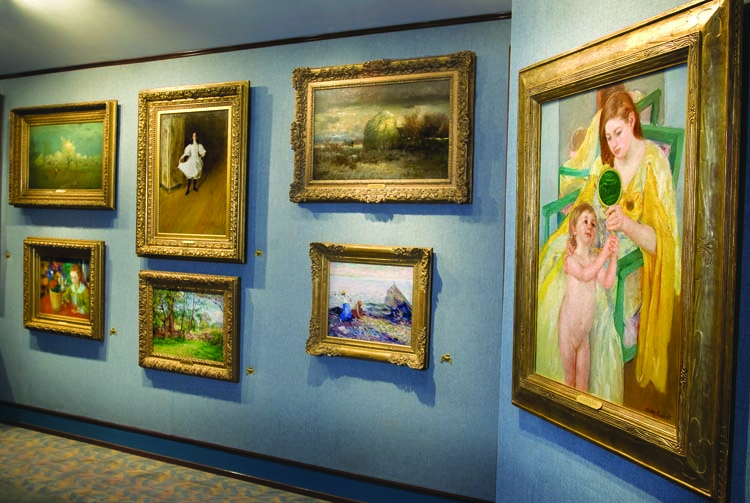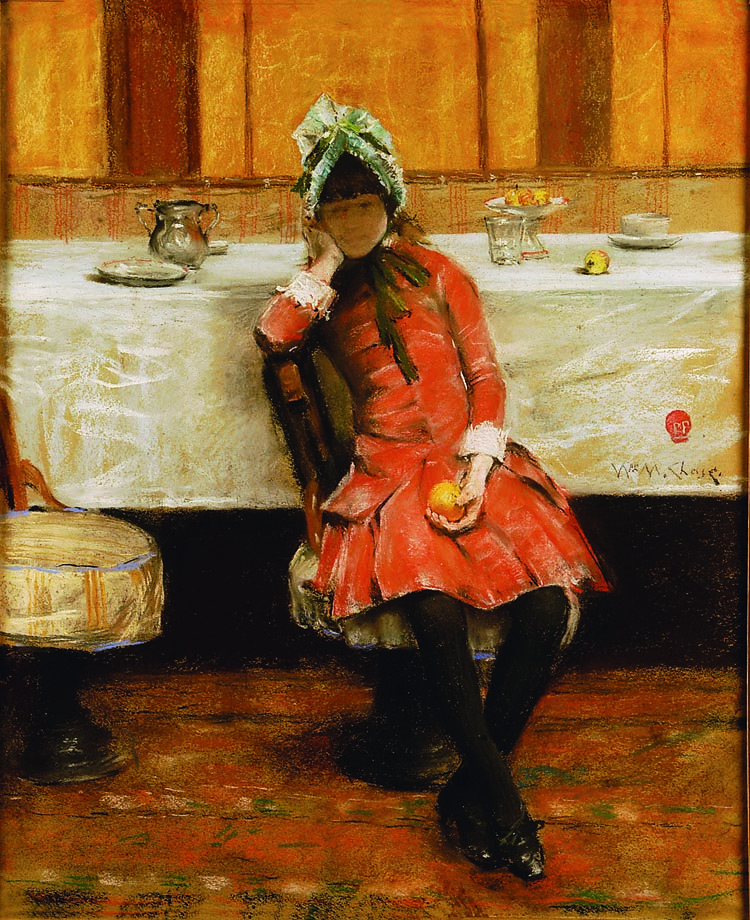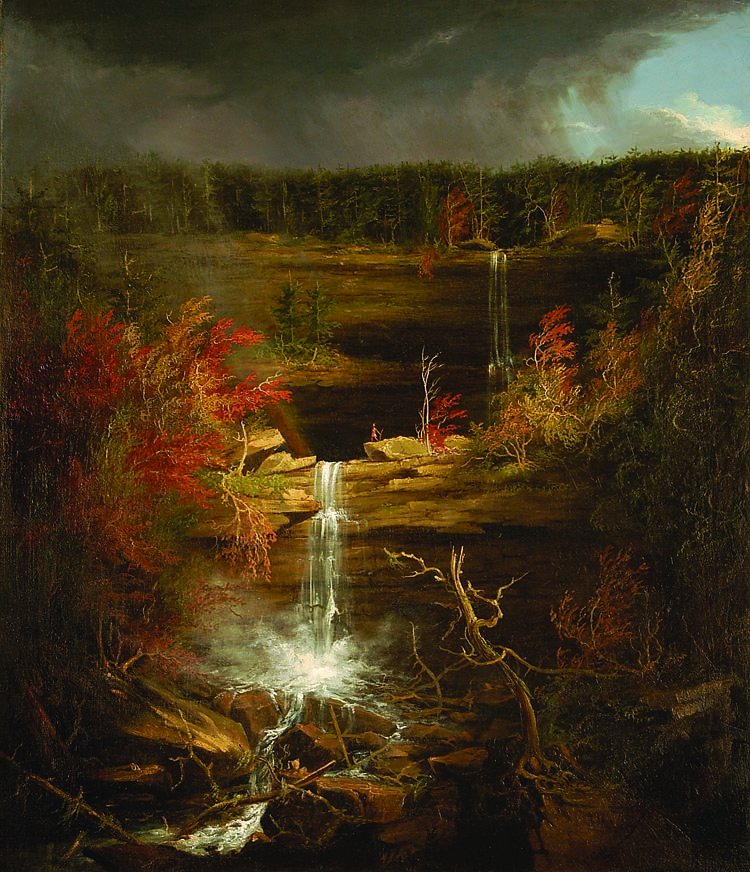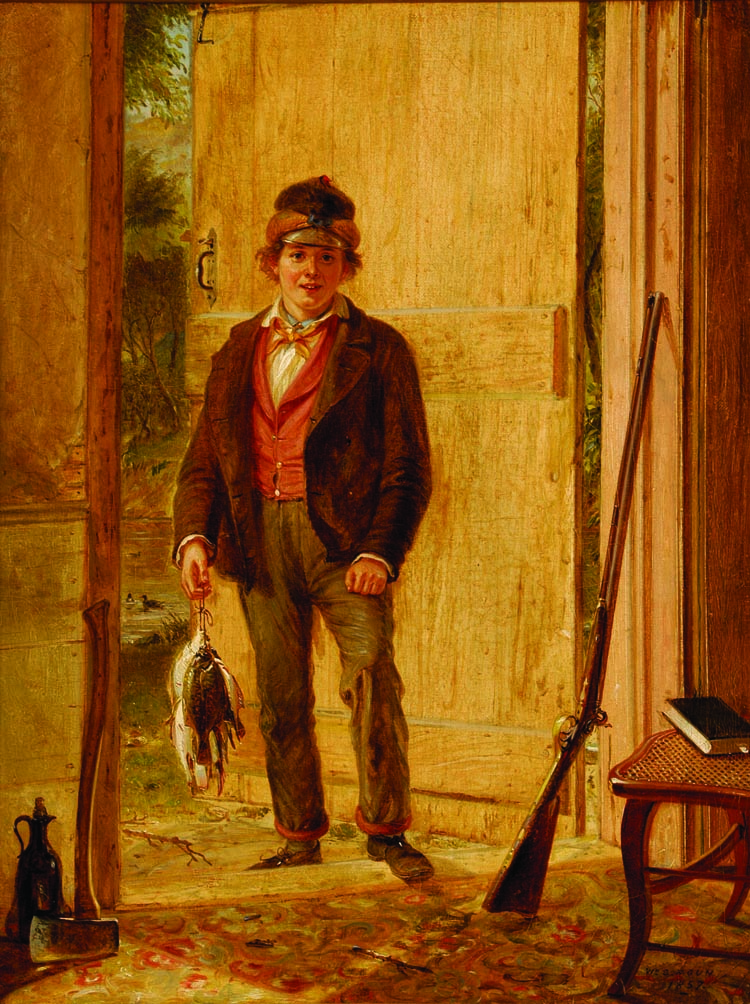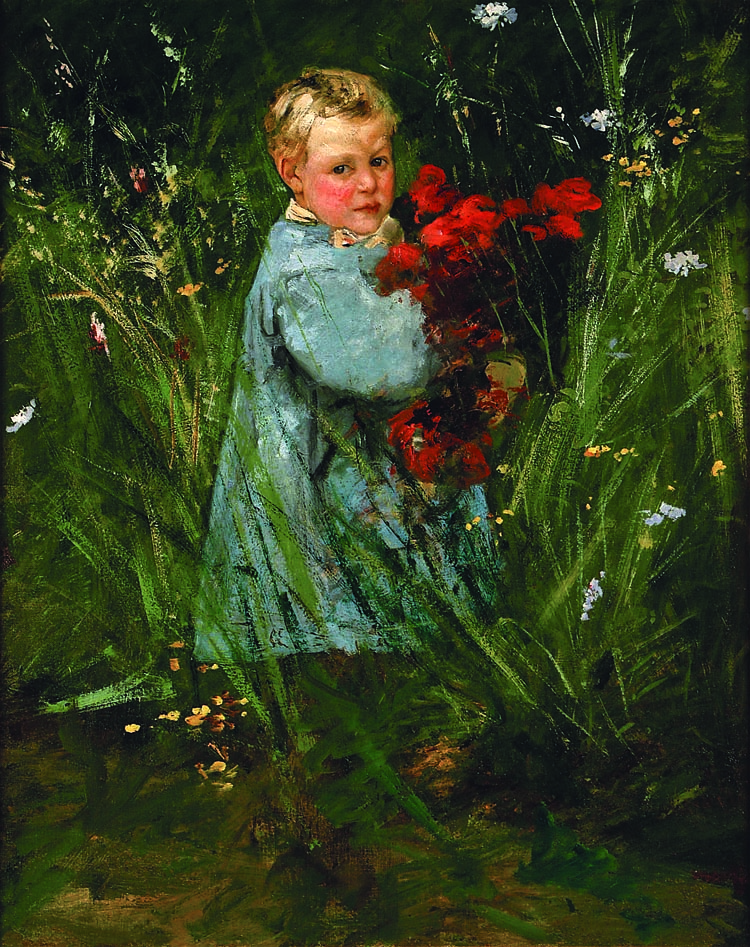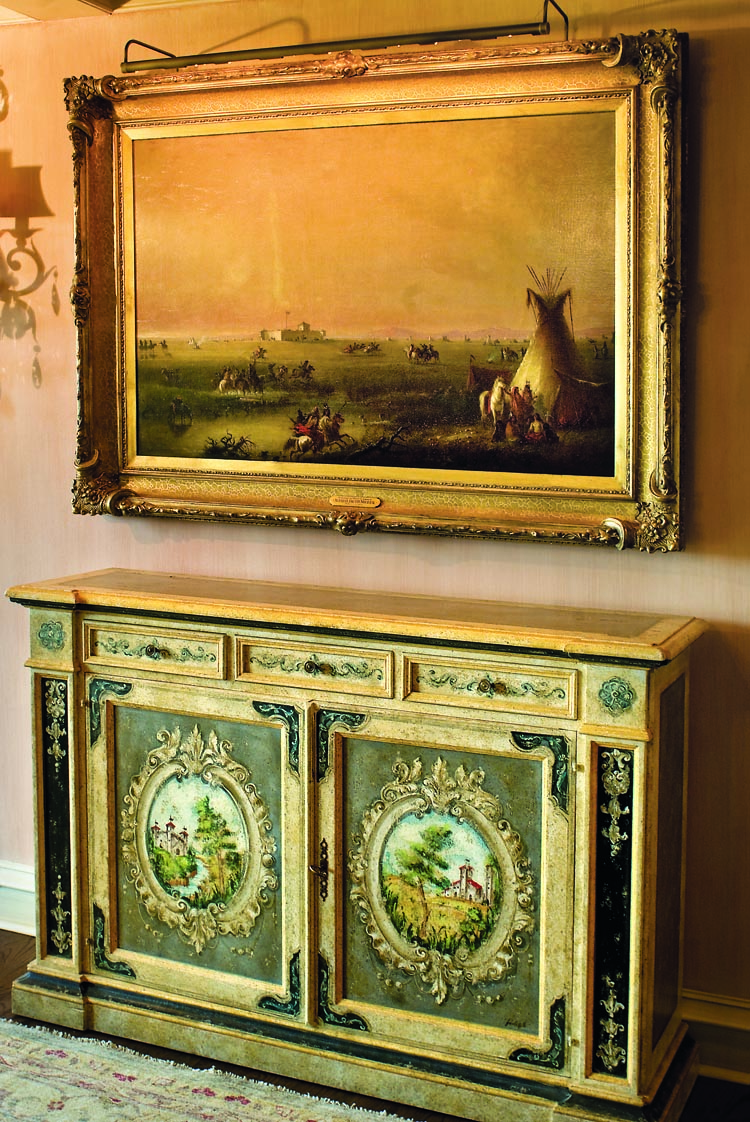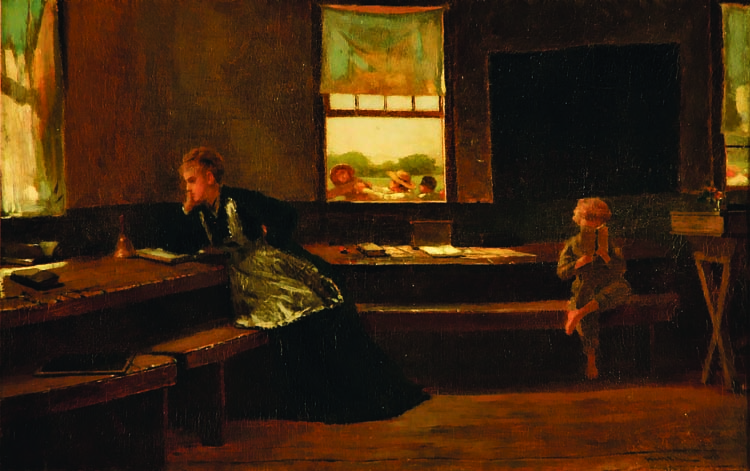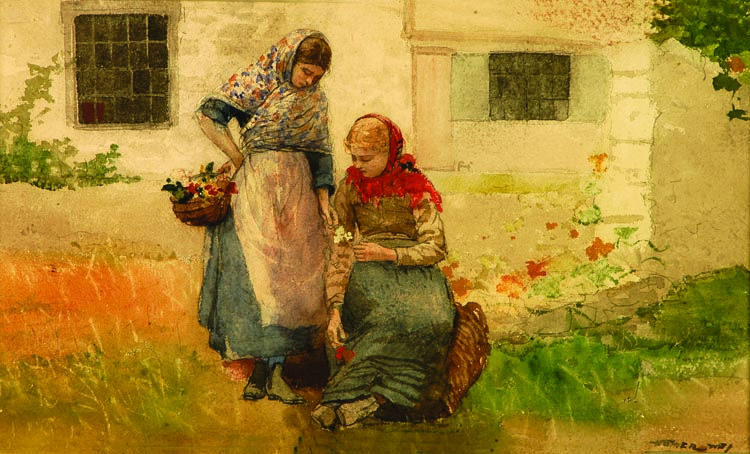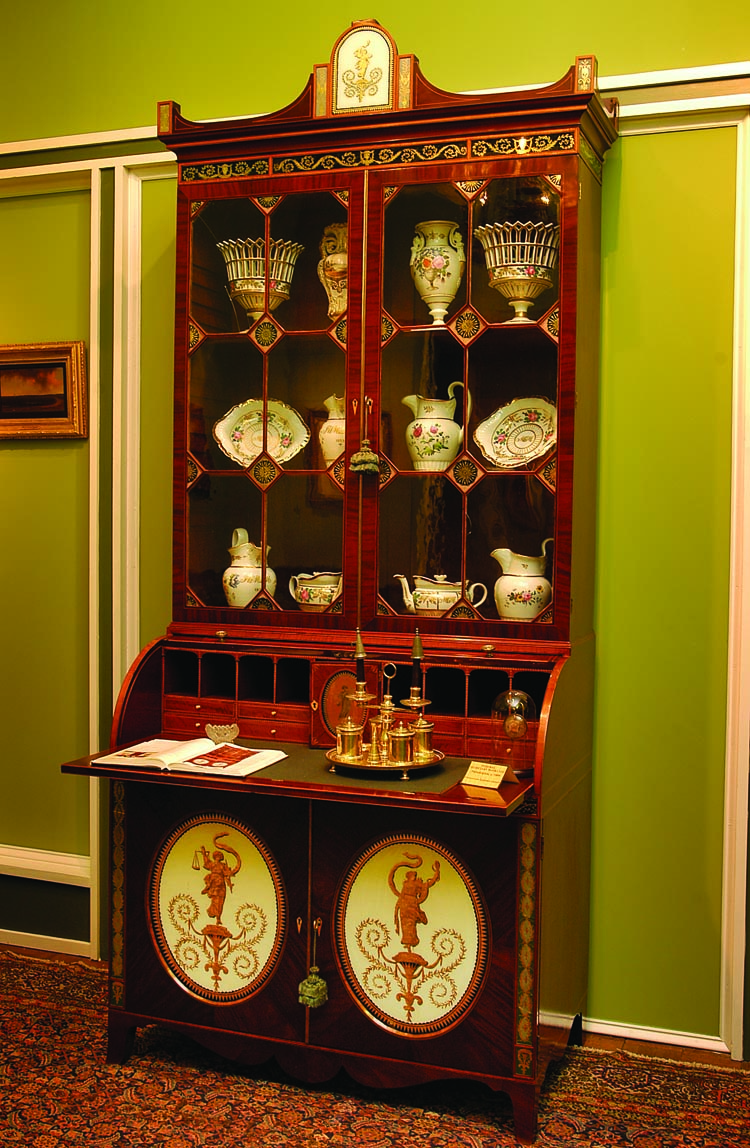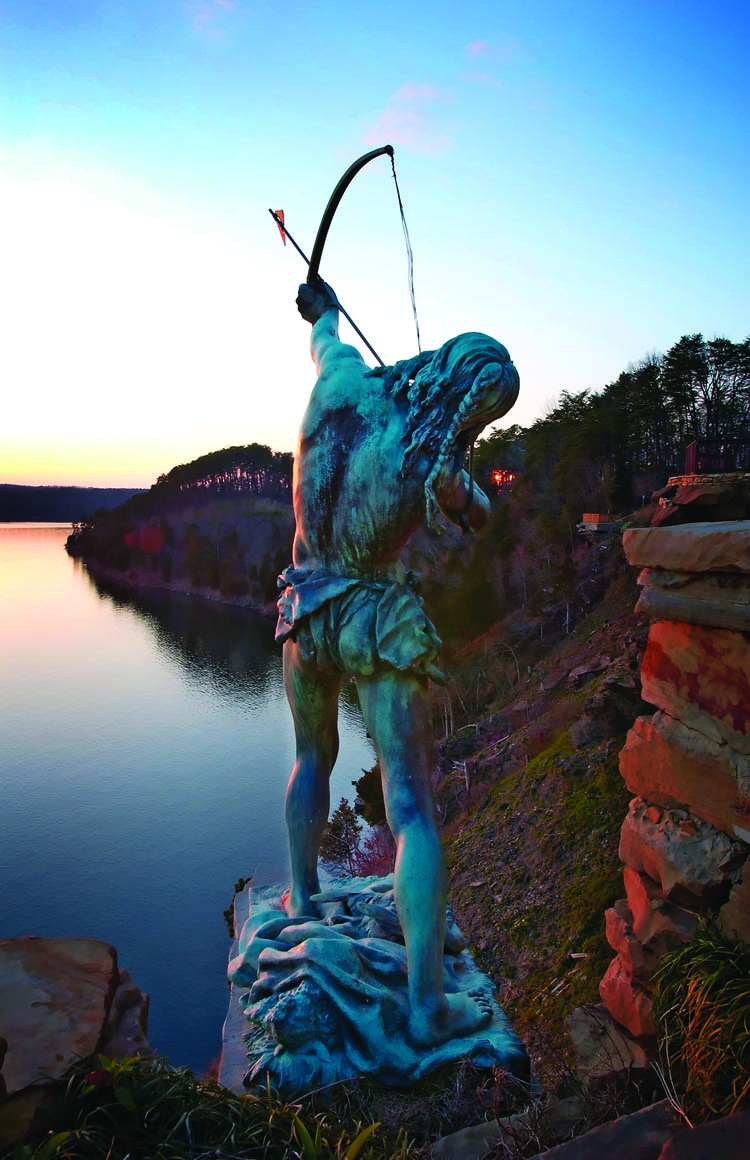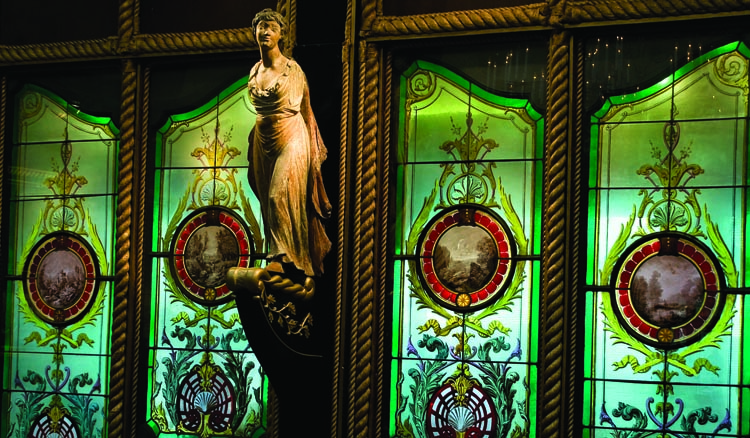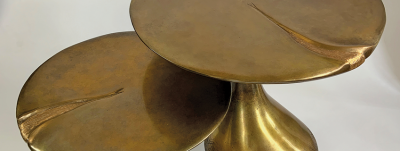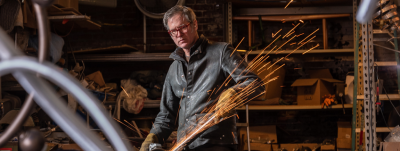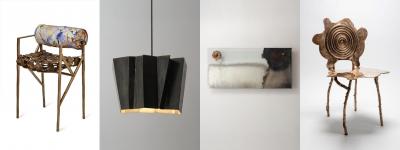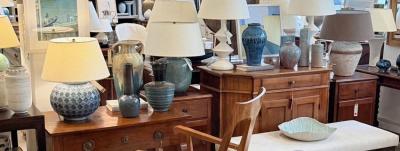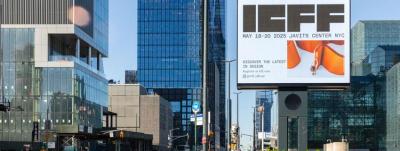The Museum that Jack Built
What is it about men named Jack? They have a vitality that keeps them at the top of their game, whatever their game is. Think Jack Kennedy, Jack Nicholson, Jack Welch. Now, add one more amazing “Jack” to that distinguished list, Jack Warner of Tuscaloosa, Alabama. At the age of ninety, Jonathan “Jack” Westervelt Warner looks back on a life of accomplishment. He was the president of Alabama’s Gulf State Paper Corporation, now the Westervelt Company, started when his grandfather, Herbert Westervelt, invented the ubiquitous square-bottom paper bag. Jack’s tour-of-duty at the office is behind him, but the word retirement is not in his vocabulary. Every day brings new ideas, new projects, and new passions, and the one that excites him the most is his home-grown, Westervelt Warner Museum of American Art.

- A corner of the gallery displays a bounty of art. Hiram Powers’ (1805–1873) The Greek Slave of 1841–1843, was one of the most famous statues of the nineteenth century; Powers exhibited versions throughout the United States as a tourist attraction. Behind her is a Classical elliptical bureau inspired by Egyptian motifs and attributed to Joseph Barry (1760–1838) of Philadelphia, and one of a pair of klismos side chair, circa 1810. Bust of a Greek Slave is placed on the bureau. The Greek Slave is flanked by two paintings by Albert Bierstadt (1830–1902): Seal Rock, Farralon Islands (circa 1870) and Niagara Falls (circa 1869). Above hang Aboard the Cutty Sark (1972) by John Stobart (b. 1929) and Bierstadt’s Donner Lake (circa 1871).
An art aficionado for over forty years, Jack has assembled a vast collection of paintings, sculpture, furniture, and objects d’art. Whatever it is — a Colonial, Native American, Hudson River School, or American Impressionist painting, a nineteenth-century marble statue by Hiram Powers, or a rare Duncan Phyfe wardrobe—Jack views his works of art as friends who never lose their power to enthrall.
A great raconteur with a sharp eye for detail, Jack recalls his first auction. In 1970, he bought several portraits of Native American Indians that artist Charles Bird King (1785–1862) had bequeathed to the Redwood Library in Newport, Rhode Island. Jack’s presence raised a few eyebrows at the Newport auction because the six-foot-four, broad-shouldered, and highly animated Alabaman (with a pronounced drawl to boot) was not a typical collector. Jack may not have been typical, but he was a collector in the making. The purchase of King’s portraits awakened a sleeping giant, and Jack realized he had an insatiable appetite for art.
From then on, Jack went after art with the same gusto and seat-of-his-pants determination that made him a success in business. At auctions, up went his paddle, and up it stayed until he secured his prize. He filled every available space in his house, in his company’s corporate headquarters, and in the Mildred Warner House (which he created as a tribute to his mother, the previous head of the family business). One day, Jack looked around and realized that his “friends,” as he calls the works he’s collected, needed their own home, prompting him to create the Westervelt Warner Museum in 2003.
The museum is situated in the hilly woodlands of the NorthRiver Yacht Club complex, designed by Jack as a recreational and residential community overlooking Lake Tuscaloosa. The impressive setting calls to mind some of Jack’s beloved Hudson River School landscapes. He has even built ruins on the grounds to add an artful touch to the already splendid vista. A scenic footbridge with a panoramic view connects the museum to the Warner Lodge, an airy retreat for vacationers who want to round out their museum visit with golf, tennis, boating, and other activities, all conveniently available. Jack boasts that he personally mixed the paint to create the lodge’s distinctive color scheme.
Viewing the art on a walk through the museum with Jack is an excursion through history at its most vivid and entertaining. He likes to begin his tour in a gallery that is a monument to America’s founding fathers. George Washington is the subject of paintings by Robert Edge Pine, James Peale, contemporary artist Jamie Wyeth, and others. “I’m a flag-waving, nostalgic American and I want to put George Washington and our founding fathers back in the history books,” Jack says spiritedly. He despises the kind of political correctness that makes history bland and colorless and wants to see American icons such as Washington and Alexander Hamilton get their due. Museum visitors—adults and school children alike—hang on his words as he spins stories and offers lively interpretations that bring the paintings to life. Sometimes, he is actually in the paintings. Magnolia Loading Cotton by Moonlight in 1865, by John Stobart (b. 1929), shows a top-hatted passenger on a riverboat. On closer inspection, the jaunty gentleman is Jack.
With no formal art training, Jack says, “My knowledge is not academic, it comes from seeing and feeling.” When he acquires a new piece, he wants to know everything about it. “I bid, I get what I want, and then I study and read. My understanding of history has come from art.”
Jack has no shortage of opinions about the works in his collections. Thomas Cole’s The Falls of Kaaterskill, portraying a magnificent Catskill gorge with a lone Indian poised on a cliff, inspires Jack to expound on life’s bittersweet passages. Stopping in front of William Sidney Mount’s genre painting Any Fish Today?, he points out that the rosy-cheeked boy standing in a doorway holding a string of dead fish is stepping from the pastoral Jeffersonian world into the busy Jacksonian future.
In his book Hidden Treasures, dealer Leigh Keno recalls a memorable encounter with Jack that occurred when Keno exhibited a rare Philadelphia secretary, complete with twenty-five églomisé glass panels, at the 1995 Winter Antiques Show. Jack came, saw, and conquered, all in about twelve seconds. He told Keno that the secretary looked even better than he imagined, and after seconds of negotiation purchased it and the two small antique side tables that flanked it.
“When he gets an idea in his head—and he has new ideas all the time—it has to be now,” says Dr. Susan Austin, Jack’s wife and the museum’s executive director. “If Jack decides that a painting is hanging in the wrong place at the museum, he’ll turn to a visitor and say, ‘Want to help me move that?’” The surprised visitor may find himself hauling one end of a valuable Mary Cassatt or a Winslow Homer, while Jack holds up the other end. “I like to move paintings around,” Jack admits. “Sometimes it takes a while for a painting to look happy. What story do you want it to tell? That influences where it should be and what should hang next to it.”
|
Wherever Jack hangs his paintings is home. Jack is moving a lot of paintings these days because he has just built a new house. His former home is an imposing English Tudor style house surrounded by magnificent gardens. Designed by Jack, the gardens pay homage to his favorite artists. Boldly-colored flowers stand at attention near artful “ruins” built by Jack. He has even incorporated dead trees—beautiful in their stark simplicity—into the lush landscape.
Inside the house, expanses of window add light and views of greenery to every room, creating a whimsical tree house effect that counterpoints the formality of the place. The large and beautifully proportioned “English Room” is lined from ceiling to floor with antique oak paneling Jack purchased in England after the Second World War. He built the room to fit the paneling.
Jack’s new house next door is a spacious, light-filled villa he remodeled for his new bride, Dr. Austin. The couple married earlier this year. The atmosphere is casual and serene, with spectacular views of luminous Lake Tuscaloosa. Works by Winslow Homer, William Merritt Chase, Alfred Jacob Miller, and John James Audubon, to name a few, adorn the walls. Jack likes to surround himself with beauty. But, as Dr. Austin points out, he does not like to keep it to himself.
Jack Warner prides himself on starting trends rather than following them. In 1960, he commissioned architect Cecil Alexander to model Gulf States Paper’s new corporate headquarters after an eleventh-century palace in Japan, complete with an interior garden inhabited by peacocks and black-necked swans. He was an innovator when he bought paintings by Albert Bierstadt, Thomas Cole, and Frederic E. Church. “I was told they were photographic, not real art,” Jack remembers with amusement. His advice to the new collector is straightforward and from the heart. “Buy popular culture rather than ‘official’ culture,” He says. “Don’t go by what’s in or out. ‘Official culture’ vacillates so much that you don’t know where you stand. Just buy what you love.”
This article was originally published in the Autumn/Winter 2007 issue of Antiques & Fine Art magazine, a digitized version of which is at afamag.com. AFA is affiliated with Incollect.com.


